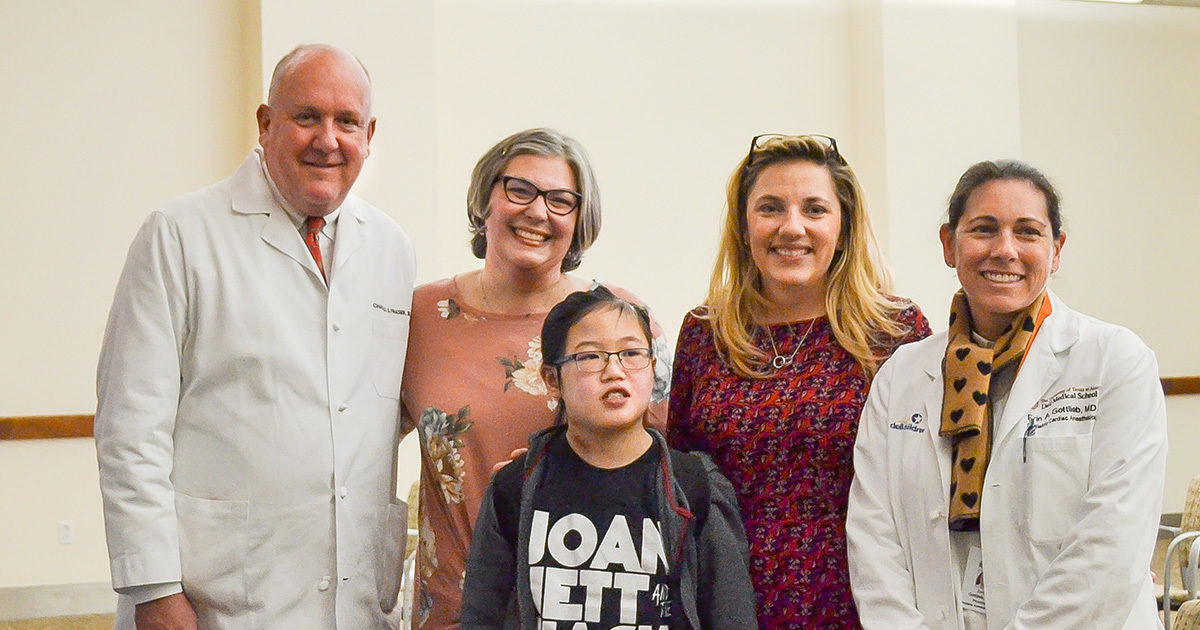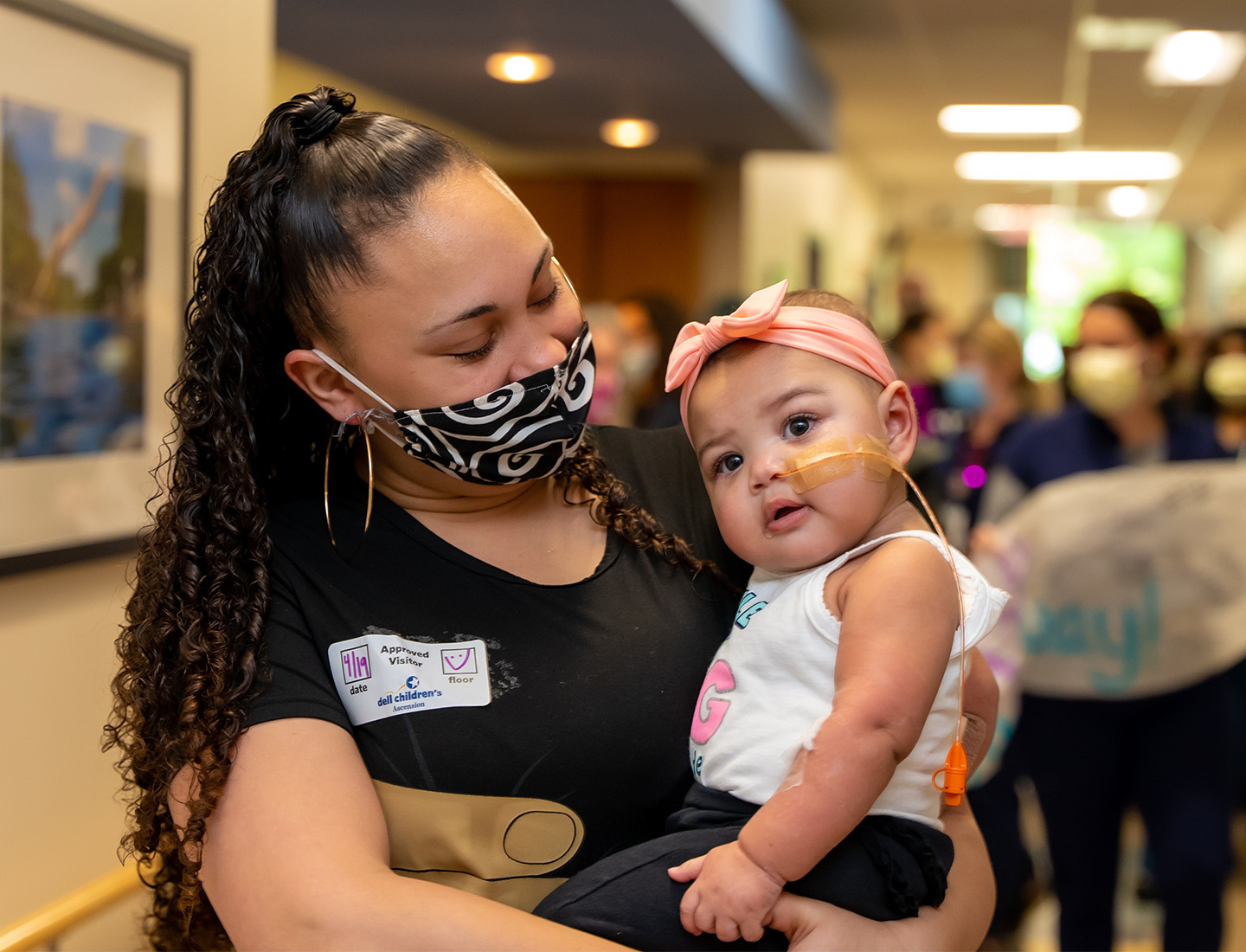The First Child in Central Texas to Receive Mechanical Heart Device
The Texas Center for Pediatric and Congenital Heart Disease delivers innovative, life-saving care
Reviewed by: Texas Center for Pediatric and Congenital Heart Disease
Written by: Lauryn Feil

12-year-old Grace Jennings lives with her mom, Jamie Jennings, in San Antonio, Texas, where she attends middle school, enjoys being with her friends, loves playing with her dog, and has a talent for making music. Unlike other preteens who are transitioning into the new middle school environment, Grace has been fighting to stay in this world, a struggle that began before she was even born. Grace was born in China with a severe congenital heart defect that required her to have multiple cardiac operations early in life. At the age of 18 months, Jamie adopted Grace and has worked as a single mother to maintain Grace’s health and care throughout her childhood, which has been a constant uphill battle.
Whereas most hearts typically have two sides that keep the oxygenated and deoxygenated blood separate, Grace’s lower chamber did not fully develop in utero, leaving her with a single ventricle to support blood flow to and from the rest of her body. As a result, the surgeries she has undergone have worked to reconfigure the heart and circulatory system to support blood flow utilizing her one ventricle.
While congenital heart defects are the most commonly occurring birth defect, affecting one in every 100 children born, single ventricle defects are rare, affecting one in every 20,000 live births. The treatment for these types of conditions is also very complex, requiring a high-functioning team of cardiac specialists and support staff every step of the way.
“In June 2019, we [Grace and Jamie] were referred to Dr. Charles Fraser because Grace had a leaky valve, and she started building up a lot of fluids in her abdomen and legs,” says Jaime. “Then, Grace started sixth grade in the fall, and it’s hard, you know, so it added additional stress on her heart.” Grace began feeling weaker and her heart function began to decline, so they made the decision to immediately head to Austin for treatment.
On September 18, 2019, Grace suffered from cardiac arrest and underwent CPR by Dell Children’s Hospital staff for nearly two hours to save her life. Five days later, the team that makes up the Texas Center for Pediatric and Congenital Heart Disease, a clinical partnership between Dell Children’s Medical Center and UT Health Austin. Led by UT Health Austin pediatric congenital heart surgeon Charles Fraser, Jr., MD, the Texas Center for Pediatric and Congenital Heart Disease performed a 10-hour open-heart surgery to implant a left ventricular assist device (LVAD) to stabilize Grace’s heart function.
“Grace’s last surgery before she had heart failure was an operation called the Fontan operation, which is a very common operation that we do here. The deoxygenated blood is routed straight into the lung arteries and the single ventricle pumps blood throughout the body,” says Dr. Fraser. “Something that sometimes happens in patients with single ventricles is that over time the valves that let the blood into the heart start to leak and heart function starts to become compromised and, in Grace’s situation, the heart rhythm can become acutely unstable.”
The LVAD device is most commonly used in adults and is not pediatric-specific, but because Grace is old enough to have a heart big enough, Dr. Fraser was able to apply technology typically used in adult care to pediatric care. The LVAD pump is implanted internally near the heart and includes two tubes, one connecting to the left ventricle and one connecting to the main artery, to help carry blood out of the heart and to the rest of the body. A small wire extends outside of the body and hooks up to an external battery pack, and when turned on, the device takes over most of the heart’s pumping function to deliver continuous blood flow to the body.
Grace is the first pediatric patient in Central Texas to undergo this type of life-saving operation. “It really is an amazing device, extremely durable, and highly effective,” says Dr. Fraser. “Patients typically get better and better when they’re on this device because it allows them to get stronger, their nutrition improves, and they can be outside of the hospital, where recovery typically occurs more quickly when surrounded by family and friends.”
Care for Grace also extends beyond Dell Children’s Hospital and into her community back in San Antonio. Dr. Fraser and members of his team have taken the time to visit and teach her local pediatricians, hospital and rehab staff, family, and more how to use the LVAD device and care for patients like Grace.
“Our goal is to get her back to a new, if not better, baseline. Then, we will start the process of looking for a new heart,” says Dr. Fraser. “But she’s come a long way; Grace played a rock concert for us a few weeks ago, including a song that she wrote herself. She is an extraordinary musician in addition to being an incredibly brave patient.”
After spending over three months in the hospital, Grace and her mother were finally discharged on December 23, 2019 just in time to celebrate Grace’s 12th birthday on December 24 and the holidays. “Grace is stronger than she’s ever been. She’s got biceps now!” says Jennings. “She’s been lifting things she couldn’t before she got really sick and she’s even riding a bike again. This is an amazing thing and the best program I have ever been a part of. I’m so, so grateful.”
To learn more about the Texas Center for Pediatric and Congenital Heart Disease or to make an appointment, call 1-855-324-0091 or visit here.
